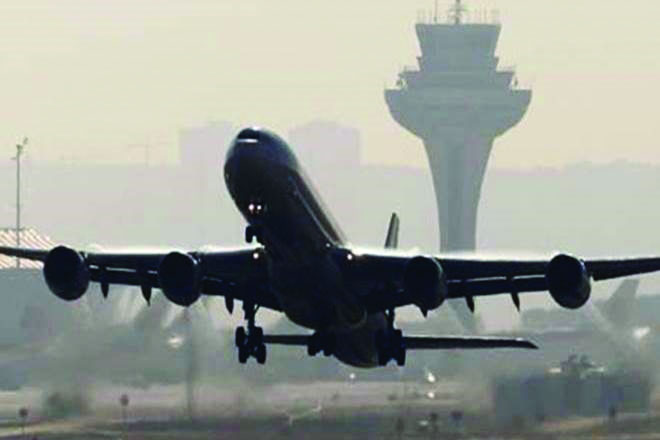
House Panel Rules on Civil Aviation
by Opinion Express / 29 December 2018Are airline passengers an angry lot? Yes. They are frustrated with high excess baggage charges, overpriced food and occasional inordinate delays of the airlines. But with airline tickets being cheaper than ever before before, more and more Indians are flying. While some of the charges are understandable, they remain the only way for most airlines to make money. Indeed, evidence from airlines in the international market has proven that a lot of airline profits are driven by what are now known as ancillary revenues such as these. After a Parliamentary Committee report made it clear that many of these practices are unfair, what is the way forward? Well, the airlines should charge more for all tickets then. But given that a huge majority of travellers do manage to travel within the weight limits, fare increases, because some people want higher baggage allowances, might be unfair to the former. Why should a person, taking a short business trip between Delhi and Mumbai, subsidise the luggage allowance of another passenger? Especially with most Indian airlines suffering financially, these statements are confounding.
That said, it is imperative, as the Committee has noted, that airlines train their ground and cabin staff better to deal with trouble. While many Indian passengers do scream and shout, they should understand that many of the airline staff are doing a thankless job on days when there are weather-related delays and what not. Better staff training can help mitigate those problems. At the same time, the Government and the Civil Aviation Ministry should move an airline passengers’ ‘Bill of Rights’ that has proper time-bound compensation written out in case of delays and cancellations. In Europe, all airlines are forced to pay out in case there are heavy delays instead of just ‘refunding’ tickets. Sure, there should be exemptions made for events beyond the airlines’ control, such as the drone problems at London’s Gatwick, but codifying compensation issues is a better move than demanding more baggage allowance.
Writer and Courtesy: The Pioneer
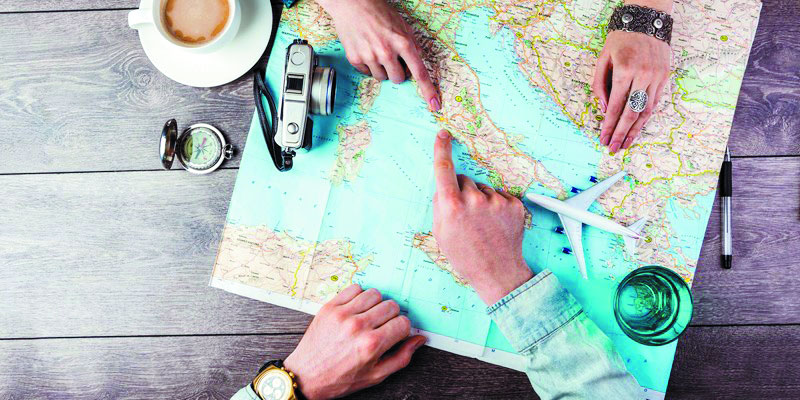
Out of the Comfort Zone
by Rakshit Desai / 24 December 2018With the current year wrapping up, 2019 is all set to mark new travel habits and trends that will blend the desire to head to unexplored and offbeat destinations in the coming year. Indians are travelling like never before. And these travellers have varied aspirations to explore newer destinations across the world, both on shoestring and lavish budgets.
One of the hottest trends in 2018 was Cross Generational Travel. As travelling with an extended family, in-laws or grandparents became ‘cooler’, this led to a new trend of cross-generational trips, that takes everyone in a family to a new aspect of a destination. And this has rewards in the form of strengthened bonds and memories.
Another hot trend was Multi-Destination Travel. Many travellers prefer clubbing destinations to their existing itinerary as it helps them to strike off several places at one go which proves to be cost effective. For example, experiencing The Great Barrier Reef in Queensland and performances at the Opera House in Sydney, clubbed with Bungee Jumping at the Kawarau Bridge in Queenstown or experiencing the night safari in Kenya clubbed with the pristine beaches at Seychelles would be cheaper than doing each separately.
Since the release of Dil Dhadakne Do, a full-length Hindi film shot on a cruise, experiencing the sea aboard a luxury liner became extremely popular with Indian travellers. Once considered to be too expensive, cruise holidays are no longer the reserve of the rich and wealthy only. This trend has gained momentum among all age groups in 2018 as the experience to board a cruise has great aspirational value among Indian travellers. Also keeping the Indian value-seekers in mind, a cruise holiday is a great value for money — owing to all-inclusive packages. Asian waters continue to remain as cruise hotspots due to air connectivity and pricing. However, Alaska Cruises, Bahamas and Florida Cruises, South American and Transatlantic cruises along with River cruises in Europe continue to garner increasing interest.
An unusual trend that got noticed in 2018 was Glamping — luxurious camping. These travellers love to combine adventurous destinations with luxurious accommodations in camps with high-end services and amenities. For example — Luxury Safari Tent stays in Masai Mara, Kenya saw an enthusiastic response from Indian travellers.
Business mixed with leisure, Bleisure, continued to change the Indian workplace culture in 2018, where travel for work was perceived more as an experience rather than routine. The key elements contributing to the rise of Bleisure not only included growing work stress amongst employees or maintaining a work-life balance, but also a certain technological advance enabling “work from anywhere”, which created a win-win situation for both employers and employees. Destinations like the New York, London, Singapore, Malaysia and Tokyo were top of their Bleisure appeal in 2018.
Sports Tourism gained popularity too in the year 2018, owing to the 2018 FIFA World Cup in Russia, and will surely continue to grow in 2019 with the ICC World Cup in England and Wales. Sports enthusiasts plan months in advance to visit host countries to not just enjoy the game live, but also travel and explore a new country.
A powerhouse of Long-Weekends, 2018 witnessed a never-seen-before boost to weekend getaways and staycations. Destinations that are a mere short-drive or a flight away make for a perfect Weekend Getaway. Goa, Alibaug and Lonavala were extremely popular amongst Mumbaikars. For Delhiites, Agra, Jaipur, Shimla, Mussoorie and Dehradun were favored destinations for short stays. Staycations were extremely popular amongst Indians who wanted to avoid travel but at the same time wanted to enjoy the luxuries of a star hotel, primarily giving them the feel of a holiday without getting out of the city.
Sleepcations turned out to be a growing trend amongst Indians travellers. Exclusively designed for sleep deprived travellers with high pressure jobs, ‘sleepcators’ often end up in mountains or at beaches for a relaxed time and, of course, to catch up on their sleep. Kerala, Goa and Gokarna were the most preferred locales for a sleepcation.
While travelling in large groups continues to remain a prominent trend amongst Indian travellers, 2018 also dedicated a fraction of itself to the young Solo Travellers. Solo Tours are the best outlet for travellers who desire privacy and freedom to explore locales at their own pace. Cities that are rich in history and culture such as Berlin, Rome, Florence, Krakow are the best spots for some soul-searching. With the growing demand of unconventional accommodation options such as Airbnb and hostels, solo Travel will continue to soar in 2019 too.
All in all, 2018 has been a year that saw Indian travellers stepping out of their comfort zone to explore activities and destinations that traditionally have not been done before. As 2018 comes to an end, many of these trends will continue to grow in the coming year as travel enthusiasts will always be on a lookout to explore new opportunities and destinations.
(The author is the Managing Director of a travel company.)
Writer: Rakshit Desai
Source: The pioneer

Poor Eyesight of Taxi Drivers
by Kushan Mitra / 18 December 2018Have you ever wondered why nearly all cab drivers don’t wear eyeglasses? It is time to encourage them to go for an eye test.
Recently a leading Indian automobile manufacturer conducted a health check-up among taxi drivers at a major airport. Along with the standard health indicators such as sugar levels and cardiac conditions being all awry, the most shocking statistic was that a majority of those tested had poor eyesight. The manufacturer indeed handed out prescription glasses for free to many of those tested. But less than six months later when the manufacturer conducted a follow-up test what they found to their surprise was that a large number, in fact most of the drivers given glasses, had gotten rid of them. The overwhelming reason given for disposing for the glasses was that savaari (customers) distrust the driving skills and abilities of a person wearing glasses.
As someone who has been wearing glasses from class nine as well as someone who regularly drives insanely fast cars around the world, this columnist finds that argument specious. What was even more shocking was that taxi drivers are not the worst specimens of people ignoring their eyesight, that would be drivers of heavy vehicles, who are even more afraid of losing their jobs if they wear glasses. What an executive from this particular manufacturer, which was very keen to remain unnamed, mentioned something that anyone could test was to see how many people they knew in their circles who wore glasses (or contact lenses).
Try this yourself, how many of your friends and family members wear prescription lenses? How many of those can contemplate driving a car or operating any other piece of machinery without their corrective eyewear? The numbers will be close to a quarter for the first question and almost none of them can drive a vehicle without glasses. So how can a significant proportion of Indian commercial vehicle drivers and even drivers of private vehicles drive without glasses? That is truly a point to ponder.
The question is whether the authorities should test your physiological status in the first place before one gets issued a Driving Licence? Also, thereupon, we must ask whether the authorities, that is the Transport Departments of India’s various states and union territories have the bandwidth and abilities to conduct such tests?
The problem in India is that solutions that will work fine in the developed world get overwhelmed by the sheer volume of numbers. So when you take a driving test, one is tested for colour blindness and some distance reading abilities at least in Delhi, but with other states issuing a Driving Licence for a few hundred rupees placed in the right pocket, we have a problem. Of course, when you take an app-taxi nowadays you end-up doubting the basic driving ability of the man (or in the rare instance, the woman) behind the wheel but the question should be if that person is even fit to drive a car physically, particularly with regard to their eyesight.
What can be done is that the private car owners, who have drivers, can start to insist that at least they get their eyes checked. You trust the life of your family and yourself on these guys, so you owe it to yourself to ensure that if they need glasses they should get them. The fact is that if a jaywalker strolls onto the road the ability to react in time as a car driver depends on how quickly you identify the problem, and with poor eyesight?
Well, you get what I have been hammering on about. It would also help if app-based cab providers and other cab providers test their drivers for poor eyesight on a regular basis, and the same applies to those who have fleets of heavy vehicles and state transportation jobs. There are far too many accidents on India’s roads, far too many dead people every year. Insisting on eyewear may not dramatically reduce the number, but doing the little things can have a major impact on the big things.
And if you get into a cab where the driver is wearing glasses, thank him (or her) for taking the time and the effort to do the right thing.
Writer: Kushan Mitra
Courtesy: The Pioneer
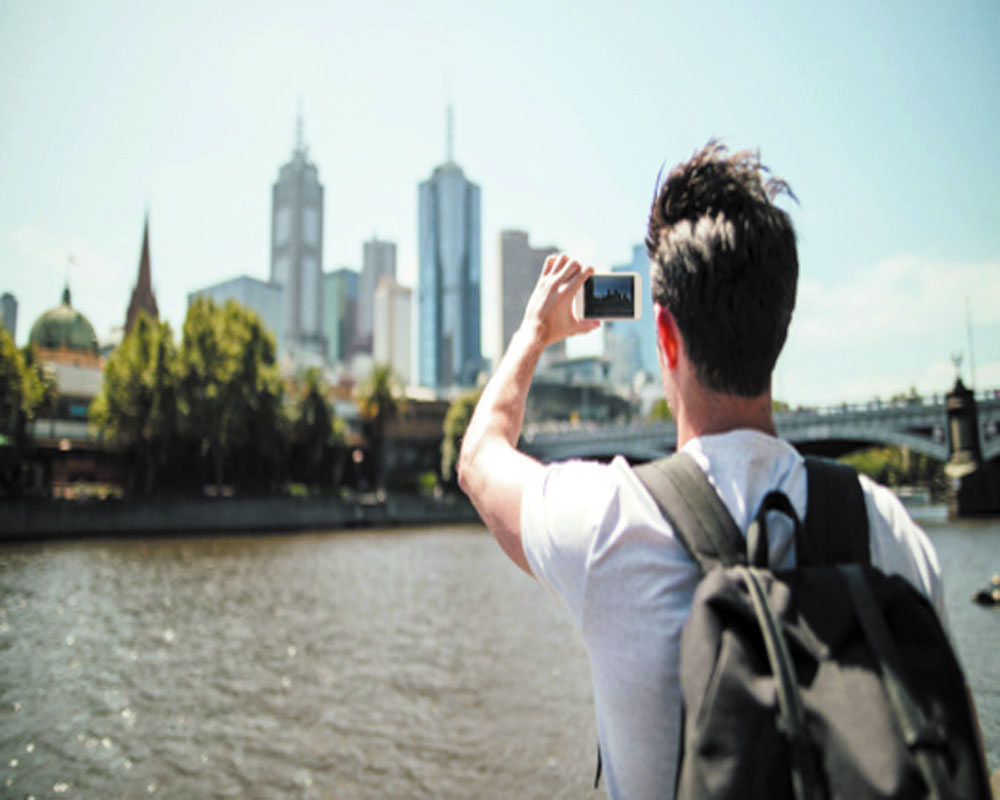
A New Definition of Gifts
by Team Viva - The Pioneer / 04 December 2018When it comes to gifting something special to their loved ones, millennials are opting for non-conventional items in a break from tradition.
The joy of unwrapping a large box with bare hands while in your pajamas is a moment of indescribable excitement. Whether it’s a birthday, anniversary, Christmas or wedding, we look forward to seeing how much thought our loved ones put into making us feel special. While material gifts undoubtedly bring joy to the recipient, at the same time they can be limiting. Thus, millennials are moving away from this dilemma and are instead opting to gift experiences rather than physical things. Anything from travel packages to a balloon ride with a romantic dinner or a meal in the sky has become acceptable options.
Riddhi Gupta had a special gift for her parents — a package for the Char Dham pilgrimage, complete with flight tickets, hotel stay, temple visits and local sightseeing that they could do at their convenience. “This year, we could not celebrate the festival together. So, this was the ideal gift for them as they wanted to take this trip since so long,” said the Hyderabad-based homemaker.
“Our research indicate that gifting an experience is far more socially connecting than giving material gifts. Our guests now seek unique personalised experiences, which are specially curated as per their requirements,” said Ashok Reddy, founder and CEO of GrabOn.
“Users prefer gifting e-gift vouchers and cards because of the convenience of usage and ease of redemption. The freedom to choose their own gifts without settling down for one explains the overall preference of gift cards,” he added. These gift cards can be used as presents for Christmas or may be for several other occasions. GrabOn alone has has documented a 90 per cent increase in transactions during the festive season, starting with Dussehra and continuing to Diwali.
The idea of giving a trip as a gift is a good one, for people across all generations. Whether you’re gifting a parent or a spouse or a friend, gathering novel experiences are more important to the millennial generation.
The consumer behaviour study by the company revealed experiential gifts, be it travel, shopping, entertainment or dining, brings people a lot closer than traditional gift baskets or hampers. This may be one of the factors why more and more people are inclined towards gifting e-gift cards and vouchers to their loved ones.
“Recently gift vouchers are being used by couples and individuals as a gifting option. Earlier people would want to give out probably a shirt or something very personal, to show that they have put in an extra effort. But 30 percent of people tend to return those gifts, while 50-60 per cent might not return it but they end up being unhappy for sure,” said Arvind Prabhakar, CEO of GyFTR.com.
“This dissatisfaction led to a new idea of giving vouchers and people easily go up to Rs 5,000 and more. In the next couple of years, 50 per cent of the people would definitely move to voucher and e-gift cards,” he predicts.
Vouchers have been around for a while, either as something which is given to business partners or as an incentive or as part of compensation, but the new trend of giving these have come to be a mainstay.
Writer: Team Viva
Courtesy: The Pioneer
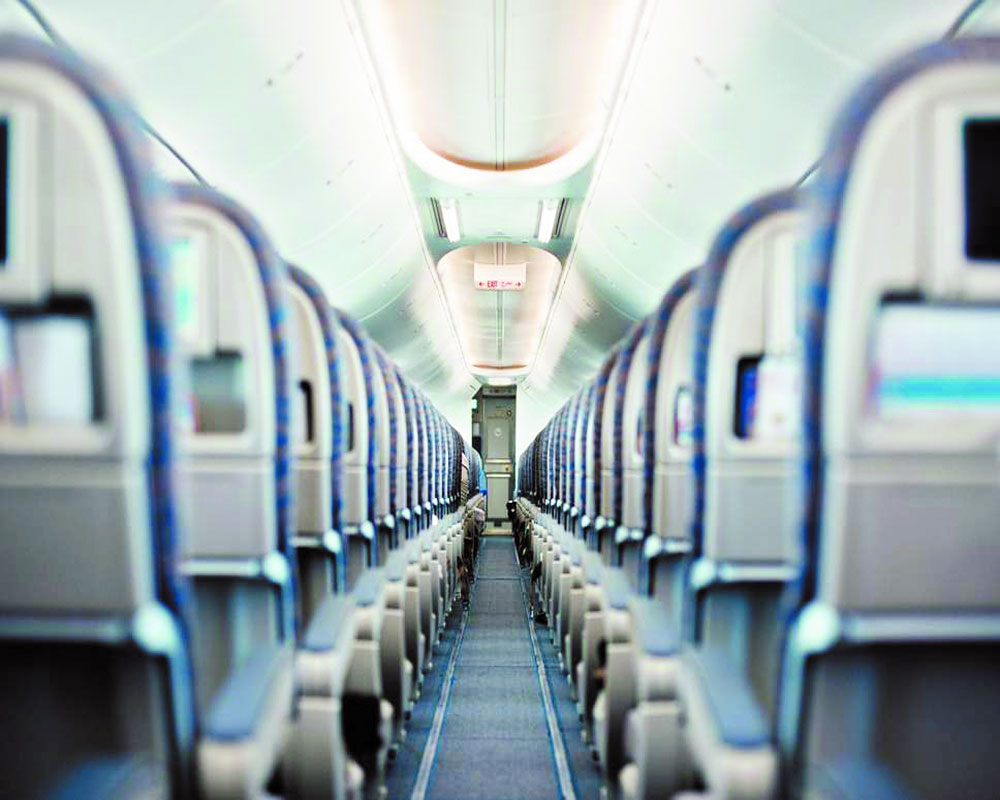
Charges on Airline Seats
by Kushan Mitra / 03 December 2018Currently, there is a debate on whether the charges by some airlines on online checked-in seats are justified.
Recently, when a prominent low-cost carrier in India started charging for all its seats if one checked-in online, it set off a furore on social media. But, then it emerged that many airlines charged for seats during online check-in unless you wanted to depend on the airline gods. This had many folks cribbing that this was unfair.
However, the fact is that this is a standard practice across the world and has been brought about thanks to very low fares. Yes, often airlines do some incredibly stupid things that become public relations nightmares, but charging for seats is not one of them and when you get a 1,000 rupee ticket on a flight, often cheaper and certainly much faster than a train, sitting in the middle seat should not seem like a torture.
The economics of the airline industry has changed dramatically over the past two decades thanks to the advent of no-frills carriers. Back in 2000, a return ticket to Mumbai from Delhi cost around Rs 12,000 (in Economy). There was one booking class, flights were limited and often waitlisted. Today, there are over 80 flights a day between India’s two most important cities, and return fares, other than during the festive season, can be had for as little as Rs 8,000, often even less if you choose the red-eye flights, which could be as little as Rs 5,000 return.
So fares have actually come down in absolute terms, but in real terms, when you account for the cost of money, air fares are at a quarter of what they were. At the same time, India’s fleet of civil aircraft has gone from under a 100 back in 2000 to over 600 today and the number of domestic travellers from around 10 million-odd to an estimated 150 million today. Air fares have come down despite oil prices shooting up, the cost of planes and salaries climbing as well.
And that has democratised flying. Many of you reading this at Delhi airport could be occasional flyers who would never have dreamed of flying even five years ago. And that is a great thing. Flying should not just be the privilege of the wealthy and the elite. In a large country like India, flying is a necessity.
The Ministry of Railways might make for fun tweets on the issue but the fact is the Delhi-Mumbai Rajdhani still takes 17 hours, while the door-to-door travel when taking a plane (including time spent at the airport) will be less than six hours. Time is money when travelling on business and time is wasted when travelling on vacation. Indians do not have time to take long-distance trains if they can afford it unless they enjoy the leisurely pace of steel wheels.
One reason the airline business has changed is because very often airlines actually run their flights at a loss. This is a model pioneered by Ryanair and their eccentric and extremely successful Chief Executive, Michael O’Leary. Ryanair’s model includes flying to out-of-the-way airports which is not possible in India, but the idea of selling cheap tickets to passengers to fly the aircraft at a loss has been copied. O’Leary, however, is no altruistic fool.
The airline makes what is described as ancillary revenue, that is the sale of excess luggage, food, priority services and seats. Ryanair has been charging for seats for years now and is considering implementing a policy that will restrict even carry-on luggage. So unless you pay for the overhead bin you cannot use it. Ryanair can charge just 20 Euros to travel between Barcelona and London (Rs 1,700), and if you want a fun weekend there, it is cheaper and faster than any other way of getting there.
But think about it, if you are travelling to Mumbai for just a meeting and not spending the night, all you need is your laptop case and chargers, which can fit easily under the seat in front of you, so why wouldn’t you take a barebones ticket? If you are flying for cheap, you should not expect a red carpet.
Of course, if you are flying with a lot of luggage, children or just want the guarantee of a window seat, you should pay for the services because the base fare is already next to nothing. No airline is forcing you to buy any food or additional services onboard and if you want food, an assured seat or a blanket onboard, you have the choice of flying other full-service airlines in India. Not that airline food is great whether it is paid or free on most flights. And the same applies if you are taking an international flight as well. Many seats are paid even during online check-in unless you are flying a higher fare category or business class.
Yes, airlines can do some very stupid things at times and can often be tone-deaf to complaints, but in an era of paid seats, do remember that is the small price you have to pay for cheaper airfares. At the same time, do remember that fewer people will be willing to ‘adjust’ so that you can sit together with your friends or family, because if you have paid for something you are highly unlikely to give it up and you would be right in doing that. And a couple of hundred rupees for a seat are still cheaper than the stone-cold samosas that you might buy onboard!
The fact is that air travel is today a necessity for many of us and it is far from being romantic. Crowded airports, screaming children and tediously long lines have made the romance of the ‘good old days’ of air travel disappear, and one of the largest manufacturers of aircraft uses the brand name ‘Airbus’ after all. That said, air travel is also the safest form of long-distance transportation, which makes it all the more convenient. And if I am asked to pay a slight bit, I should not mind. However, it will be useful for airlines to put out these facts in black-and-white on their booking channels, as well as offer a category of fare that allows me to choose my seat well in advance.
Most airlines already do this and for us passengers, we should also realise that air travel has moved from the realm of the exotic to the realm of the stupefyingly regular and treat it that way. A few hundred rupees should not really make a difference unless we admit that we are nothing more than perpetually outraged.
Writer: Kushan Mitra
Courtesy: The Pioneer
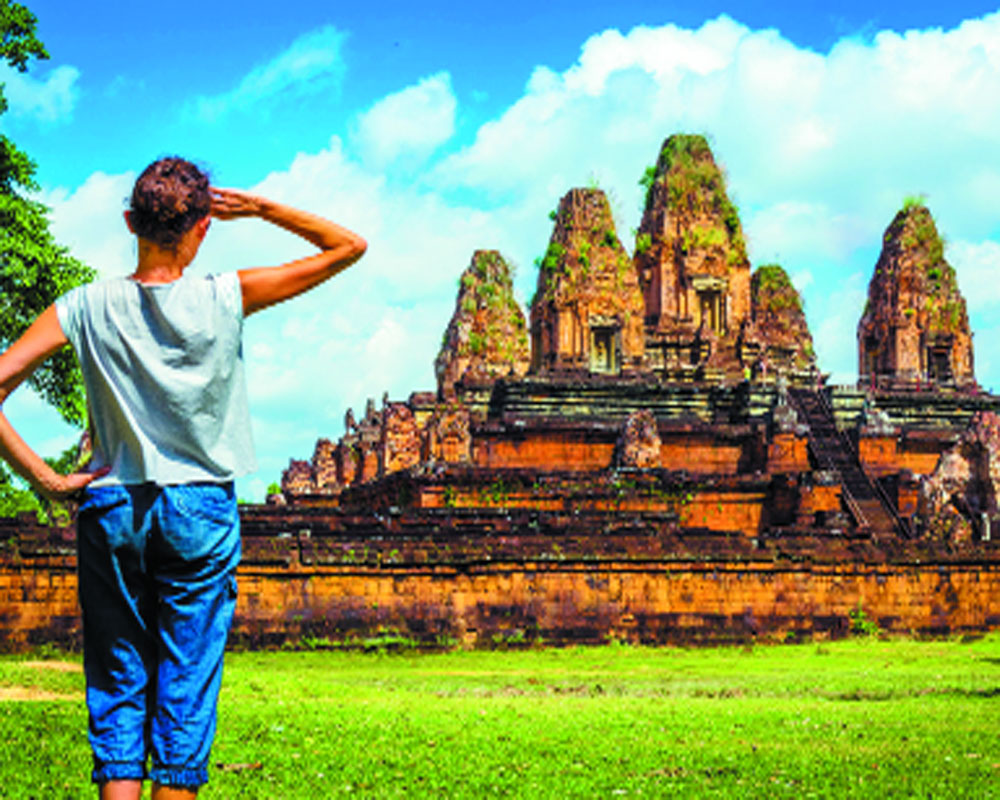
Tips on Budget Travel
by Team Viva - The Pioneer / 26 November 2018Don’t let rupee depreciation upset your travel plans. Opt for a cheaper destination, try homestay, and stay on the outskirts to save money.
It hasn’t been long that the rupee was found to be the worst-performing currency in Asia this year. And a depreciating currency means that the outbound tourism industry will take the hit. Because of the weaker currency value, tourists and travellers are now tempted to explore low-cost luxury travel spots, a trend spotted around the world. For instance, travellers from Barcelona to Beijing are cashing in on Argentina’s cheap currency as the country grabs headlines as a go-to destination.
Similarly, Indians are increasingly opting for cheaper destinations like Vietnam, Cambodia, Nepal, Sri Lanka and Bhutan while giving costlier places a miss. Such a trend has been termed as “luxury for less” by many travel companies. Balu Ramachandran, head of Air and Distribution, Cleartrip, said that the continuing depreciation of the rupee against the dollar has made short haul destinations hotspots for leisure travellers. “We have seen 35 to 40 per cent growth in bookings for short-haul destinations like Bangkok, Singapore, Colombo, Denpasar and Sharjah (in 2018 as compared to 2017’s graph), which is higher compared to the national average of 21 per cent. Travellers are not strict about aligning their travel plans with how the value of rupee has changed with regard to the currency of the destination country but overall are looking at short-haul destinations which are more economical,” he said.
He has observed that around 40 per cent of these bookings are made less than 15 days before the trip date, which indicates that a lot of people plan such trips at the last minute. Around 25 percent of these trips are one to seven days of duration. He names Nepal, Colombo, Bangkok and Phuket in Thailand, Maldives and Indonesia as the most visited destinations among Mumbaikars. The thing to be noted here is that a 40 per cent increase in total bookings of these destinations has been noticed since the rupee value started depreciating.
Karan Anand, head relationships, Cox and Kings, adds another place to the list — Turkey. He said, “This is due to the devaluation of their currency by 30 percent vis-a-vis the dollar.” He pointed out that such places add great value in the low-cost luxury segment as they offer cheap deals. “There has been a 15 per cent increase in the number of people opting for this type of travel. Within India, some properties in Goa also fit the bill,” he added.
Roshan D’silva, CEO of TripVillas.com, called Sri Lanka and Cambodia some of the “major beneficiaries” of the depreciation of the rupee. “Both these locations offer a luxury experience at an excellent price and so have become very popular with the well-heeled Indian traveller.”
By visiting these places, they are actually pleasantly surprised by all costs — including eating out, staying in five-star resorts and hotels, enjoying a spa and visiting various tourist attractions. “These are turning out to be much cheaper than any other value vacations in India itself.”
Well, what are the alternatives if the travellers wish to cut stay costs? He said that the primary alternative is to stay in a holiday home instead of a hotel, where travellers end up saving 50 per cent on the accommodation rent. However, Manmeet Ahluwalia, marketing head, Expedia, seemed to be disagreeing on the fact that it is only and mostly Asian countries that Indians are choosing. He said that even though they are working according to their set budget, they also try to find alternatives to visit and explore places outside the continent. He said that with the spread of social media, the trends have started pointing towards a more aware and excited society which wants to explore as much as they can.
Giving examples, he said, a few places in the Eastern Europe like Poland, Croatia, Hungary, Slovenia and more are preferred in terms of budget. He said, “People do cut short their durations of the trip or choose a less-costly hotel/resort to stay in, but do not cut off vacations even outside Asia. We have also observed a high trend in booking hotels that are off the city centre, which are usually much cheaper and more affordable. The nearer you are to the center of the city, the higher is the cost of your accommodation. So, the location is also kept in mind.”
Adding to this, he gave his own example saying that if he plans a visit to France, he will also try to accommodate other places that is nearby. It’s not just about the currency depreciation but also about a combination tour.
Writer: Team Viva
Courtesy: The Pioneer

Manipur Sangai Festival
by Team Viva - The Pioneer / 15 November 2018The Manipur Sangai Festival is set to be held from November 21 to 30, and the Manipur Tourism Corporation is actively promoting it all over the country.
An unexplored tourism paradise—Manipur, has a lot to offer to every tourist to the state. This year, the state is back with its grandest festival—Manipur Sangai Festival—to celebrate the rich culture, heritage and culture of this pristine land.
An annual affair, the Manipur Sangai Festival is celebrated from November 21 to 30. The festival takes its name from the state’s unique, shy and gentle brow-antlered, Sangai deer or the dancing deer. The Sangai deer is found only in Manipur’s floating Keibul Lamjao National Park at the Loktak Lake. The festival has great profundity in showcasing its rich art and cultural heritage and celebrating the various ethnic diversities in Manipur.
The chairman of the Tourism Corporation of Manipur Limited, Dr Sapam Ranjan, informed that the festival will be inaugurated at Imphal on November 21. Two other districts of the state—Bishnupur and Senapati, will also play host to the festival and have a line-up of events ranging from half-marathons, water sports and trekking along with other adventure activities. He was speaking at the curtain-raiser of the festival which was recently organised at the Select CityWalk mall at Saket in New Delhi.
The member of parliament and Padma Bhushan awardee Mary Kom, the former boxing world champion and Arjuna awardee Sarita Laishram, along with the former Indian football team captain P Kenedy Singh, marked their presence at the event to promote the festival in the capital. Officials from Manipur Tourism along with its stakeholders shared updates on the preparations for the largest tourism festival of the state.
“Taking the festival as an opportunity, we are here to connect with our potential stakeholders in the capital city of the country. We wish to invite them to come to our state and enjoy our cultural extravaganza. Manipur holds great many surprises for every visitor. The profound natural beauty of the state and the unique attractions that we have, like the floating national park of Keibul Lamjao and Sangai are found nowhere else in the world,” said Ranjan.
A variety of dance forms of over 34 recognised tribes of Manipur will be the special attraction of this mega tourism event. The main venue of the festival at Hapta Kangjeibung, Imphal, entertains visitors with its mesmerising performances of renowned artists from all over the world every evening. The famous Raas Leela dance of Manipur is a must watch amongst the variety of performances by folk dance artists.
“Manipur receives the maximum number of visitors during this time of the year when we celebrate our biggest tourism festival. The curtain raiser for this festival is organised in Delhi to create awareness amongst potential visitors about the state’s offerings as a tourist destination. Manipur is largely unexplored and offers huge opportunities for adventure, culture and rural tourism aficionados,” said the tourism director of the state government W Ibohal Singh.
The director further added, “Our state presents huge opportunities for adventure tourism and we are exploring opportunities to associate with domestic and international adventure tourism associations. It is the right time for us to inform travellers in the region that our side is ready to welcome them to the Manipur Sangai Festival. The state is considered one of the safest state for women travellers. It has a women’s only market where many businesswomen run their small vegetable stalls till late at night.”
Started in 2010, the festival has grown by leaps and bounds over the years and has become a platform to boost tourist inflow. The domestic tourist inflow during 2010-11 was recorded at 116,652 which increased to 164,483 in 2017-18. Similarly, there has been a manifold increase in foreign tourist figures to the state from 431 in 2010-11 to 3,787 in 2017-18.
Writer: Team Viva
Courtesy: The Pioneer

Flying Getting Costlier
by Opinion Express / 03 November 2018The Competition Commission of India is right to think that the rising airfares needs to be justified.
Every time there is a natural disaster or other unforeseen event, airfares seem to shoot up. As the floods devastated central Kerala a few months ago, airfares to and from the State went through the roof; following floods in Kashmir, the same happened to airfares ex-Srinagar. It has been alleged by the paying public that the airlines are like vultures preying on the misery of travellers left with few options given that road and rail links are often also cut in these conditions. But are the airlines really guilty of being greedy and should the Government control airfares? It is to investigate this that the Competition Commission of India (CCI) is stepping into the row, with the holiday season approaching when airfares are traditionally at their peak. So, is it the right thing to do?
Yes, it is. Not so much for the purpose of controlling airfares, though, but to look at supply and demand including the functioning of algorithms which airlines have in place to offer fares. The fact is that the travelling public has become addicted to cheap airfares and expect them to stay at the same level through the year. But the modern airline industry works in a completely different way. There are no fixed airfares. Fares are driven by demand. In low season, return fares between Delhi and Mumbai drop to below Rs 7,000 return while right now, just ahead of Diwali, if you wish to fly at a reasonable hour, you could pay upwards of Rs 20,000 for a return ticket on the same sector. One hopes that the CCI will understand that in absolute terms airfares have collapsed since the airline industry was deregulated. Even at peak season highs, airfares between Delhi and Mumbai have fallen by over half in absolute terms. While some clamour for regulation, the fact is if airfares were to be sustainable from the airlines’ point of view, it would entail a 10-20 per cent jump in all airfares right now.
The reality of India’s aviation sector is that airlines are bleeding and with losses in 2017-18 estimated by an aviation consultancy to touch Rs 10,000 crore, one cannot begrudge the airlines charging the fares that they do sometimes. The CCI will find its hands tied given airline finances and any stricture passed against the airlines will almost certainly be struck down by the courts. But the airlines themselves should realise that absurdly high fares after a disaster are bad publicity and counter-productive.
Writer: The Pioneer
Source: The Pioneer

Oman’s Tourism Relation with India
by Team Viva - The Pioneer / 01 November 2018Acknowledging India as the leading source of tourists, Oman is promoting its latest multiple offerings to Indian travelers.
Steadily increasing their tourism market share, the Sultanate of Oman is marketing its new tourism products in the Indian market. In the past, travel between the two countries has been limited to employment but over the past few years, the destination has witnessed a steady increase in leisure travellers. The fact that in 2017 alone, Oman received 321,161 Indian arrivals, registering a growth of seven per cent, is a testimony to the increased popularity of Oman in India. Further, from January to June this year, the country has already recorded a 15 per cent growth in Indian arrivals as compared to the same period last year, informed, Lubaina Sheerazi, the India representative of the Ministry of Tourism, Oman.
“We recognise and acknowledge the demand from India and other potential markets. As part of the Sultanate’s National Tourism Strategy 2040, the Ministry of Tourism seeks to introduce the sector’s latest developments, services, projects and facilities of the tourism industry,” said Her Excellency Maitha Saif Al Mahrouqi, the undersecretary of the Oman Tourism Ministry.
Oman is introducing various incentives to ease travel between the two countries. The destination has announced a ‘short-term tourist visa’ which would allow the Indian travellers to visit Oman for a period of 10 days for five Omani Riyal or Rs 940. Also, the newly-built Salalah Airport and the revamped, state-of-the-art, Muscat International Airport, will expand the capacity from 12 million to 20 million passengers, further facilitating travel.
One of the most important brand-building activities for Oman has been its association with Bollywood. Film shootings at the destination have given way to collaborations to promote it as a location of interest and increase its appeal among Indian travellers. Other focused areas of Oman include promotion of destination weddings and corporate travel including the meetings, incentives, conferences, and exhibitions (MICE) travel. The country has seen an increase in business tourism with the launch of the Oman Convention and Exhibition Centre in Muscat.
Sheerazi commented, “Being only three hours away and having excellent air connectivity with various cities in India also makes Oman a preferable wedding destination.” It is important to note that Oman Air caters to 11 cities in India with over 161 flights a week.
Oman is tapping into every segment of tourism. New itineraries for different kinds of travellers include a visit to Nizwa (the old capital) for the culturally inclined travellers; guided tours to the Raz al Jinz Turtle Reserve for the wildlife enthusiasts and a host of adventure sports, both soft and hard, at various locations across the country for those who wish to quench their adrenaline.
Writer: Team Viva
Courtesy: The Pioneer
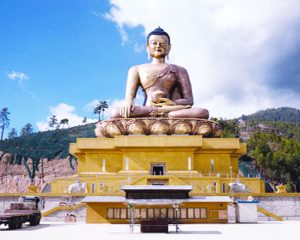
Bhutan: Tourists’ Paradise and a Symbol of Sustainable Living
by VK Bahuguna / 18 October 2018The Himalayan kingdom of Bhutan is an enchanting spot for tourists with gross national happiness as it index for growth and development.
Bhutan, also known as Druk-Yul (meaning the land of the thunder dragon), the closest neighbour and a time-tested friend of India, was in news a few months ago due to the Doklam stand-off between India and China. However, the Indian people’s interests in this beautiful country lies is much more than this stand-off as the country witnesses a large bunch of tourists who flock Bhutan in record numbers every year. In return, they enrich its economy as tourism is the second largest source of revenue after export of hydroelectricity.
Bhutan was the first country in the world to coin the word ‘Gross Domestic Happiness’ to signify its development index. It attained international acclaim for this unique venture. It is also officially the only carbon negative country in the world and it emerged as a world leader in evolving revolutionary climate change policies.
This writer has always been fascinated with the people of Bhutan. After two successful visits, he latched on an opportunity to visit the beautiful country again during the month of October to enjoy its pristine beauty and culture once again. The purpose of this article is to discuss what makes Bhutan a unique nation in the world where the people love their King much more than anything else in their life and the King considers himself as a true servant of the people.
The writer observed several facets of Bhutanese life closely and would like to put forth certain things that the Indian Government as well as the citizens can emulate from this tiny little nation of eight lakh people living in 38,000 sq mt area.
The name Bhutan is derived from the ancient Indian term ‘Bhotania’ which means the end of the land of the Bhots (Bhots meaning Tibet). Bhutan is located on the southern slopes of the eastern Himalayas, landlocked between the Tibet Autonomous Region to the north and the Indian States of Sikkim, West Bengal, Assam, and Arunachal Pradesh to the west and south. Bhutanese people primarily consist of the Ngalops and Sharchops, called the western Bhutanese and eastern Bhutanese, respectively.
Bhutan has a wide diversity of ethnic groups, starting with a number of small tribal groups (related to similar tribes in India and Sikkim), whose ancestry dates back to almost three thousand years. People also migrated from Tibet, Nepal and Mongolia. Bhutanese are followers of the Mahayana branch of Buddhism with huge influence of Tibetan and ancient Indian traditions.
Dzongkha, meaning the language of the fort, is the national language of Bhutan. The country was inhabited 4,000 years ago, there are archeological evidence indicating settlements in Bhutan dating back to 2000-1500 BC. Bonism (involving worship of nature spirits and practice of sacrifice), a pre-Buddhist religion of Tibet, was the main religion in Bhutan before the arrival of Buddhism.
Seventy-two per cent of its area is under forest cover. It has a rich variety of plants and animals with a very rare Takin, a species of goat-antelope, the national animal of Bhutan, surviving with less than 20 specimen, mostly in the national park at Thimpu. Paro is the sole airport situated in a picturesque valley and serviced by the Druck Airways, a national carrier and Bhutan Airlines with flights to Delhi, Kolkata and Bangkok. The capital city of Thimpu is a picture perfect hill station at an altitude of 2,334 meters.
The country is a Constitutional Monarchy with a Parliament. Over the years, the previous Monarch, who abdicated at quite a young age to hand over the reign to his son the present King Khesar Namgyel Wangchuck, had promoted democracy in the country so much so that that the present King empowered the Parliament to impeach the King! This is a marvelous commitment from an all-powerful Monarch for the people’s wishes and a reflection of ushering the nation to true democratic life.
This should serve as a lesson to all powerful leaders of the world, including India. This has come from the King not as a largesse but due to the fact that the Bhutanese people have deep respect for their culture, values and traditions which evolve themselves into a proud vivacious nation. It gives more importance to human values than simply defining the economic growth as an indicator of development.
The Bhutanese Parliament never wastes time in unruly scenes but devotes itself in fruitful discussions. This is in sharp contrast to what is witnessed in India. And because of this, they measure development on the basis of Gross National Happiness rather than on Gross National Products and this is why they have become world famous in coining this term.
Precisely, this is also the reason why Bhutan is not unnecessarily promoting industrial growth and is emphasising more on social and environmental development. Despite scarcity of resources, all citizens are entitled for free education and healthcare. The needy and the poor are provided necessary assistance for livelihoods. Still, a least developed country is fast marching ahead and leads South Asia in ease of doing business, peace and rated as least corrupt nation.
The commercial capital is Phuentsholing, which is located in south near the Indian border. The economy is based on agriculture, animal husbandry and forestry, and is a source of livelihood for 90 per cent of the population. The economy of Bhutan is aligned with that of India through strong trade and monetary links. Major industries include electricity, cement, calcium carbide, wood products, processed fruits, alcoholic beverages, among others. The main source of income is hydroelectric power and tourism industry.
From the point of view of tourism, Thimpu, Punakha and Paro are very important places. Punakha, nestled between the male and female rivers, was the capital of Bhutan till 1958 when it was shifted to Thimpu. The Punakha fort architecture is inspired by lord Viswakarma as the fort has an abode for the mechanical engineer God.
One of the most beautiful site is the 160 feet Buddha statue in Thimphu which gives an impression as if Buddha is descending from the sky and resting on the verdant forest. It can be rated as one of the most beautiful sites on Earth. Then there are the Bhutanese forts in Thimpu, Punakha and Paro, which throw light as to how religion and governance developed in Bhutan.
Paro has the most admired Tiger nest monastery which also tests the human endurance when one has to climb more than 800 steps after tracking through six kilometers uphill. On reaching the top, it gives a breathtaking view of the Bhutanese landscape.
Another important event for the tourists is the ‘Hot stone Bath’ where stones are heated red and then water is poured on them and channeled to the Bathtub which gives a refreshing bath. Bhutan is a neat and clean country and developing fast as this writer found expansion of construction activities all over in Thimpu, compared to 2011.
However, the Government in Bhutan should be cautious about expansion of its building construction activities as more and more high rise concrete buildings are coming up and changing the culture and landscape. Second, the Government must have a regulatory law to control use and diversion of forestland for developmental purpose as the scenic beauty of Bhutan is due to pristine forests and cannot be ignored. The area near the Buddha statue in Thimphu needs to be further consolidated and stabilised with vegetation. In a nutshell, Bhutan is a tourist paradise and should remain so.
Writer: VK Bahuguna
Courtesy: The Pioneer
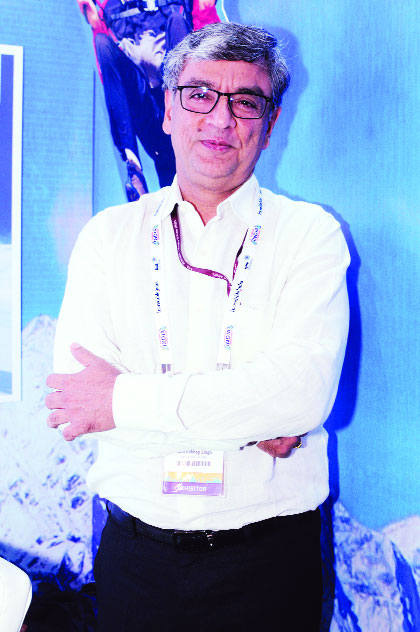
Himachal Pradesh Sets the Stage for More Tourism
by Ankita Saxena / 27 September 2018Himachal Pradesh is gearing up for more tourism-based activities by promoting unexplored destinations and transforming the state to an adventure hub. Additional Chief Secretary, Tourism, Ram Subhag Singh talks about new infrastructure projects in the state.
Some of the popular destinations in Himachal Pradesh are currently operating beyond their capacity due to high influx of tourists, leading to scarcity of resources and a threat to the serenity of the locale. To manage the sector better, the additional chief secretary for tourism, Ram Subhag Singh, explains that the state tourism department has fast-tracked development work of other unexplored destinations, to disperse the tourists and allow them an opportunity to experience some of the most pristine places in the state. Edited excerpts from the interview:
How has tourism fared in the state so far?
A total of 19 million or one crore and 90 lakh tourists visited Himachal Pradesh in 2017. The number of tourists is more than double the population of the state—nearly 72 lakh. Though this number is very large, the number of foreign tourist arrivals amounts to only five lakh. We have observed that the inflow of international tourists has become stagnant over the years, while domestic tourism is growing leaps and bounds. We have our work cut out for us. We have put proper measures to increase the number of foreign visitors to the state. Currently, the most popular destinations among foreign tourists are Manali, Shimla, Dharamshala and Dalhousie.
Which new destinations are being developed in Himachal?
Since the popular destinations in the state are struggling to accommodate more tourists than their capacity, we plan to give tourists more choices and disperse them to other places of interest. Some destinations under this plan include Janjehli in the Mandi district which is being developed for eco-tourism and trekking and Chanshal is being branded as a 3650day attraction as it is covered in snow most times a year and has pristine meadows at very high altitude. The paragliding opportunities at Bir and Billing are also being upgraded. For niche tourism segment, we are planning to promote the cold desserts of Lahaul and Spiti. These destinations are open only for six months in a year but after the opening of the Rohtang tunnel, we will be able to offer these untouched areas throughout the year. We will however regulate tourist inflow in such a way that it does not spoil the serene destination.
Which new segment of tourism are you working on?
I see a huge opportunity in the eco-tourism, rural tourism and adventure tourism segment. The state has a huge potential for ropeways, an activity which is very popular across the world. Very recently, we have taken out a policy which has made it very easy for private players to invest and set-up ropeways in the state. Earlier, the government would charge an annual concession fee from the investors from the first year of operations but we have proposed that the private players can set up the facilities and we will not ask for any fee for seven years of the operations, making the projects viable for them. Also, during the months of October and November, a tourism mart is in the works which would focus on showcasing Himachal Pradesh as an ideal destination for adventure activities. We are trying to work out some agreements with the industry and other trade association partners to boost this segment.
What are your major challenges and how are you addressing them?
We have identified connectivity as one of the major challenges to tourism. The airports in the state have shorter runways which limits connectivity. However, the present government has taken many initiatives to boost air connectivity. To address the challenge of connectivity, we are soon introducing heli-tourism from Chandigarh to all parts of Himachal Pradesh. The tourists can fly from various parts of the country to Chandigarh in the wide-body aircraft and then take a heli-taxi which will be affordable.
Is the state also developing tourist-friendly infrastructure?
We are doing very well on the front of infrastructure development. With the support from Asian Development Bank in collaboration with the government, we have already initiated projects to the tune of Rs 700-800 crore. These projects include parking facilities at tourist destinations, beautification of cities and development of several man-made lakes in the state. We have also initiated an infrastructure development project worth Rs 1900 crore over a period of eight years which will make it much easier to visit Himachal Pradesh over the next few years.
How is the state marketing and promoting its facilities?
Though the state tourism department has strong presence in the electronic and print media, we have found that our presence on the social media platforms is very weak. It is the digital age and in order to attract more young travellers towards the intended segment of tourism, we need to establish a stronger presence on the digital platforms to reach out to the target audience. To this effect, we are engaging PR agencies to manage this segment. We are also branding the new destinations and making the tourists aware about the various development initiatives of the government towards boosting tourism in the state.
Writer: Ankita Saxena
Courtesy: The Pioneer
FREE Download
OPINION EXPRESS MAGAZINE
Offer of the Month





